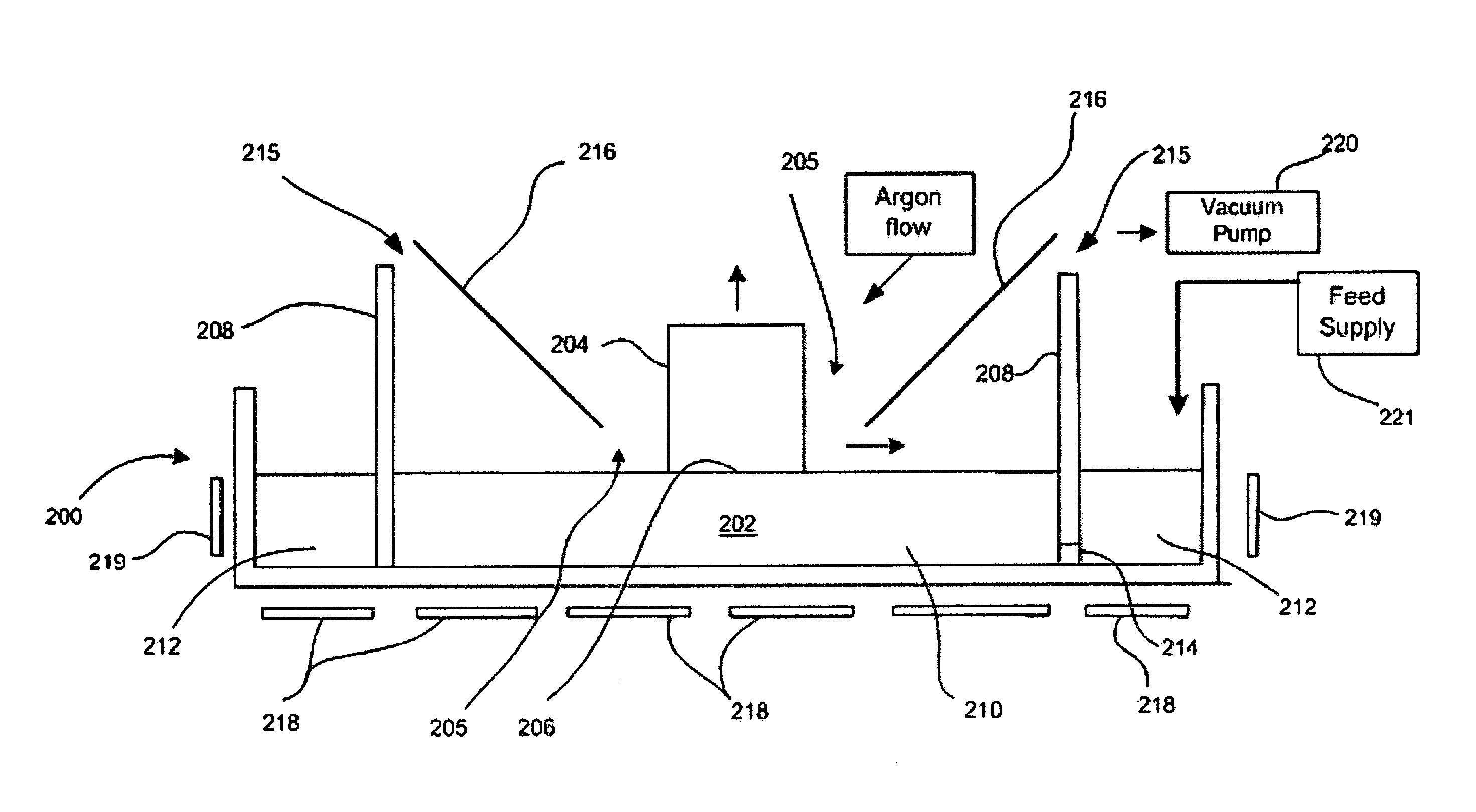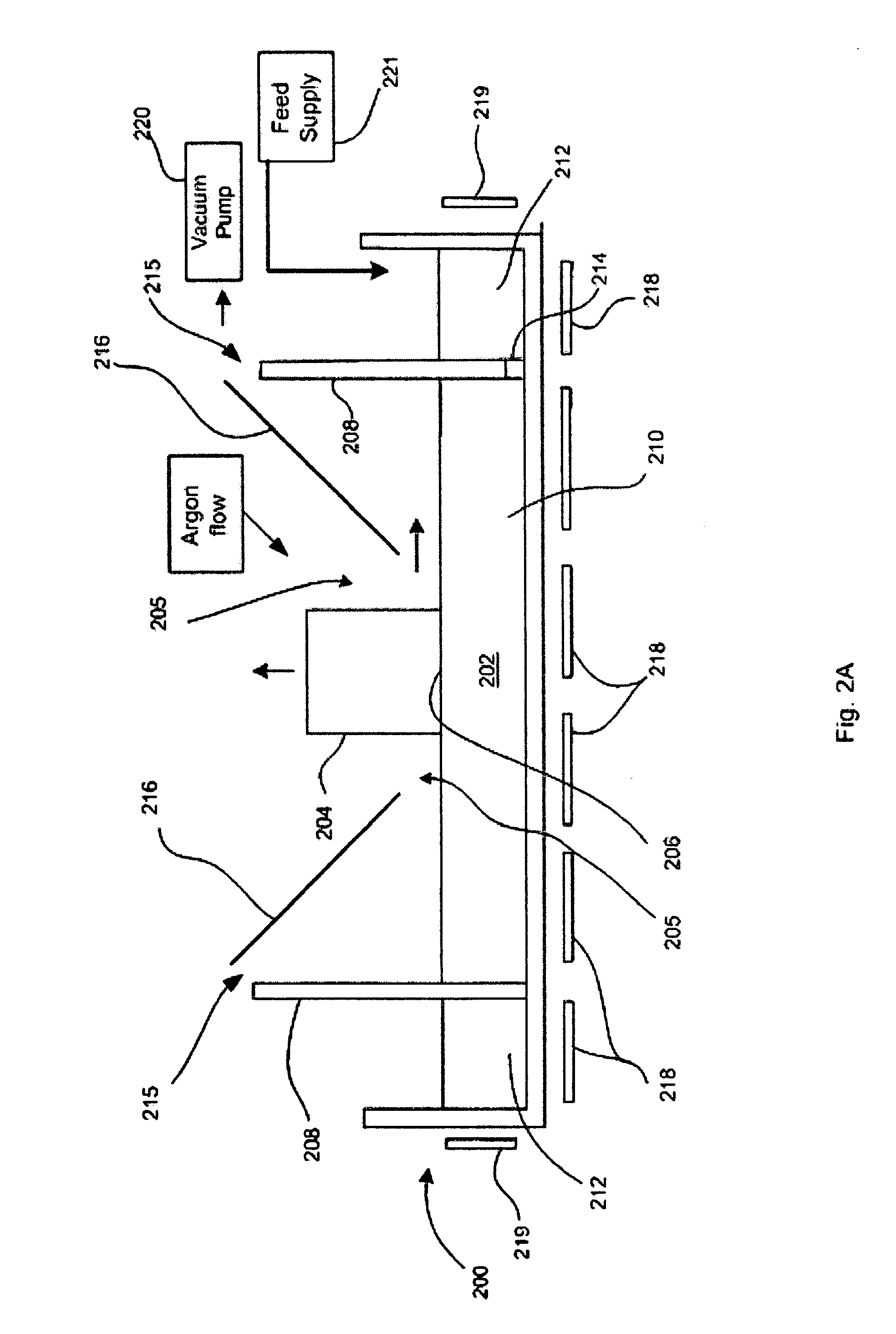Weir method for improved single crystal growth in a continuous czochralski process
a technology of czochralski process and weir, which is applied in the direction of crystal growth process polycrystalline material growth, etc., can solve the problems of increasing cycle time, increasing melt equilibration time, and increasing cycle time, so as to prevent slumping or distortion of weirs, increase path length and transit time, and limit the introduction of impurities
- Summary
- Abstract
- Description
- Claims
- Application Information
AI Technical Summary
Benefits of technology
Problems solved by technology
Method used
Image
Examples
Embodiment Construction
[0033]Referring to FIG. 1, in a conventional Czochralski system, a crucible 100 holds a quantity of molten silicon 102 in which a single crystal ingot 104 is grown and pulled in a vertical direction indicated by arrow 105 from a crystal I melt interface 106 as is well known. A weir 108 typically comprising a quartz cylinder is positioned on the floor of the crucible 100 and extends vertically above the melt as shown.
[0034]The weir 108 defines an inner growth region 110 and an outer melt supplementing region 112. One or more subsurface passageways 114 connect the first or melt supplementing region 112 with the inner growth region 110.
[0035]A heat shield 116 is typically conical in shape and depends downwardly at an angle to create an annular opening disposed about the growing crystal or ingot 104 to permit the growing ingot to radiate its latent heat of solidification and thermal flux from the melt. The top of the heat shield has a first diameter much wider than the diameter forming ...
PUM
| Property | Measurement | Unit |
|---|---|---|
| length | aaaaa | aaaaa |
| size distribution | aaaaa | aaaaa |
| size distribution | aaaaa | aaaaa |
Abstract
Description
Claims
Application Information
 Login to View More
Login to View More - R&D
- Intellectual Property
- Life Sciences
- Materials
- Tech Scout
- Unparalleled Data Quality
- Higher Quality Content
- 60% Fewer Hallucinations
Browse by: Latest US Patents, China's latest patents, Technical Efficacy Thesaurus, Application Domain, Technology Topic, Popular Technical Reports.
© 2025 PatSnap. All rights reserved.Legal|Privacy policy|Modern Slavery Act Transparency Statement|Sitemap|About US| Contact US: help@patsnap.com



